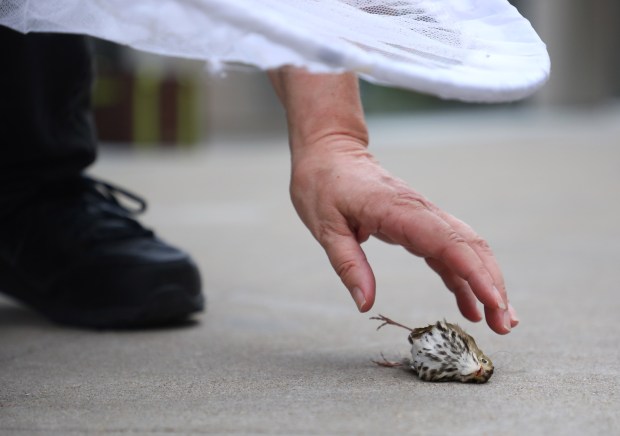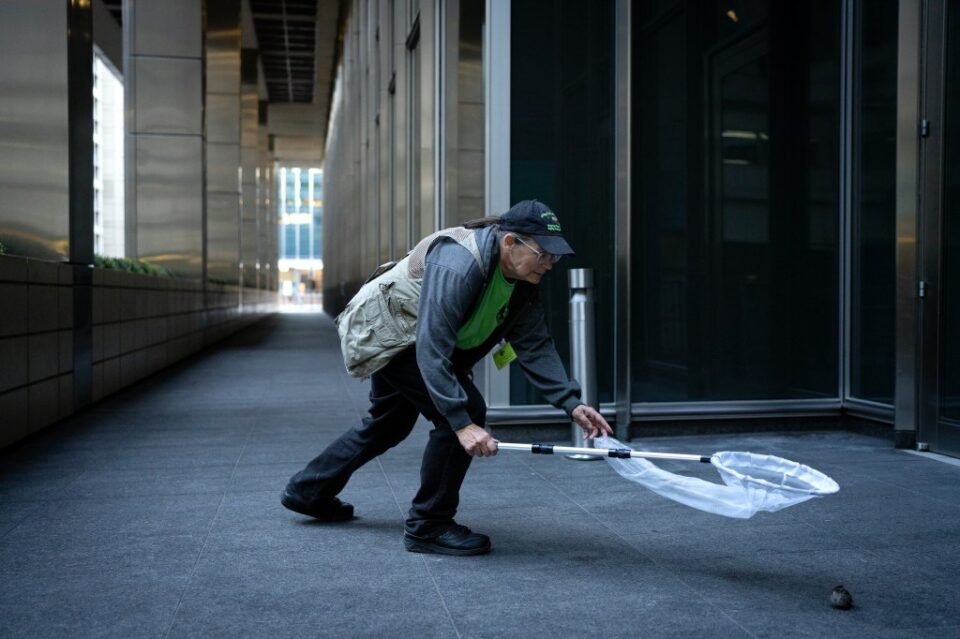[ad_1]
Birds could have a safer flight path thanks to a new Lake County policy that requires newly constructed county-owned buildings to use at least 80% bird-friendly glass on the exteriors.
The policy, which took effect immediately after approval by the Lake County Board on May 14, aims to mitigate the hazards for birds posed by buildings, particularly collisions with glass surfaces. All new county facilities, as well as renovations or additions to current structures, must use at least 80% bird-friendly glass on their exteriors from ground level up to 100 feet high.
Spring migration is well underway along the Mississippi Flyway, a major bird migratory route in North America that generally follows the Mississippi, Missouri and lower Ohio rivers.
More than 325 bird species use the flyway each year — including sparrows, warblers, owls, ducks, cranes and chickadees — to travel between their breeding grounds in Canada to their winter homes in the Gulf of Mexico, and Central and South America.
Lake County lies along the major thoroughfare, as more than 30 million birds have crossed the region so far this spring, according to Birdcast, a migration dashboard managed by the Cornell Lab of Ornithology, Colorado State University and University of Massachusetts Amherst.
More than 700,000 birds crossed Lake County just Monday night, which Birdcast considers peak migration traffic.
“I’m proud of our board and staff for being leaders on this issue, that will truly make a difference for our resident and migratory birds that live or pass through Lake County,” County Board Chair Sandy Hart, D-Lake Bluff, said.
Collisions kill up to a billion birds every year in the United States, or between 5% and 10% of the bird population, said Bryan Lenz, glass collision program director at the American Bird Conservancy.
“It’s a problem on every (type of) building,” he said. “We need all hands on deck; you can’t just do the tall buildings downtown.”
Of the bird collisions, Lenz said only 1% involve skyscrapers, or buildings over 12-stories tall. The four- to 11-story buildings are responsible for about 54% of collisions, and the one- to three-story buildings, which include homes, are involved in about 46% of collisions, according to Lenz.
In October, nearly 1,000 migrating birds died after colliding into windows at McCormick Place Lakeside Center, a glassy, low-lying building on the lakefront. Experts blamed the “massive carnage” on weather patterns, badly timed rain and lit windows at the Lakeside Center.
Donnie Dann, a Highland Park resident and co-founder of the Bird Conservation Network, a coalition of over 20 bird organizations, said bird populations are declining and collisions with glass are the second-greatest human-caused reason for bird fatalities, after feral and free-roaming cats.
“Birds don’t recognize glass as a barrier,” Dann said. “They see reflections of sky and shrubbery and they think it’s safe to fly in.”
Building design problems, Dann said, are fixable at a “modest” or even “very low cost.”
To have bird-friendly building designs, Lenz suggests reducing the amount of glass used in the building overall. For any glass that is used on the building exterior, he said it should be covered with an insect screen or have a bird-friendly pattern on it.
“The patterns can cover as little as 7% of the glass, though,” Lenz said. “So we’re not talking about something you can’t look out the window. Most people don’t even notice they’re there.”
Annette Prince, of the nonprofit Chicago Bird Collision Monitors, picks up a dead ovenbird off of Wacker Drive on May 11, 2022. (credit: Stacey Wescott/Chicago Tribune)
Both Lenz and Dann said it’s important to consider bird-friendly designs during the planning stages of a new build, rather than attempt to retrofit the building later.
Building connectors, like sky walkways, are hazardous for birds regardless of construction design, Lenz said. Home windows are also a big collision problem, which “everyone can do something about,” he said.
“If you do it correctly, the collisions won’t drop to zero because none of this is 100% perfect, but you do see big reductions in collisions,” Lenz said. “It does work. It’s just kind of a long, slow slog to get all the buildings to be right.”
Policies for bird-friendly design requirements have become more popular over the last five years, he said. Ordinances are the most efficient way to protect birds, rather than addressing the issue building by building, Lenz added.
Nearby Evanston recently requested that all residents turn off non-essential lights from 11 p.m. to 6 p.m. in an effort to prevent migratory bird deaths. Bright lights draw birds into the cities and sometimes migrating birds can get stuck in beams of light, Lenz said.
Another ordinance proposal for bird-friendly design requirements on new construction and renovations for non-residential properties and planned unit developments in unincorporated Lake County received the green light from the Lake County Planning, Building, Zoning and Environment (PBZ&E) Committee on May 8.
Chair of the PBZ&E Committee, Jessica Vealitzek, D-Indian Creek, said the Lake County Board and county staff have been working on bird-friendly design ordinances for several years.
“Taking accountability for our own government buildings is the first step,” Vealitzek said. “Next, we will consider a revised ordinance for commercial buildings. Each year, these actions will save the lives of an increasing number of birds, who are such an important part of our ecosystem.”
That ordinance is expected to be voted on for adoption by the County Board on June 11.
chilles@chicagotribune.com
[ad_2]
Chloe Hilles , 2024-05-21 20:00:19
Source link


